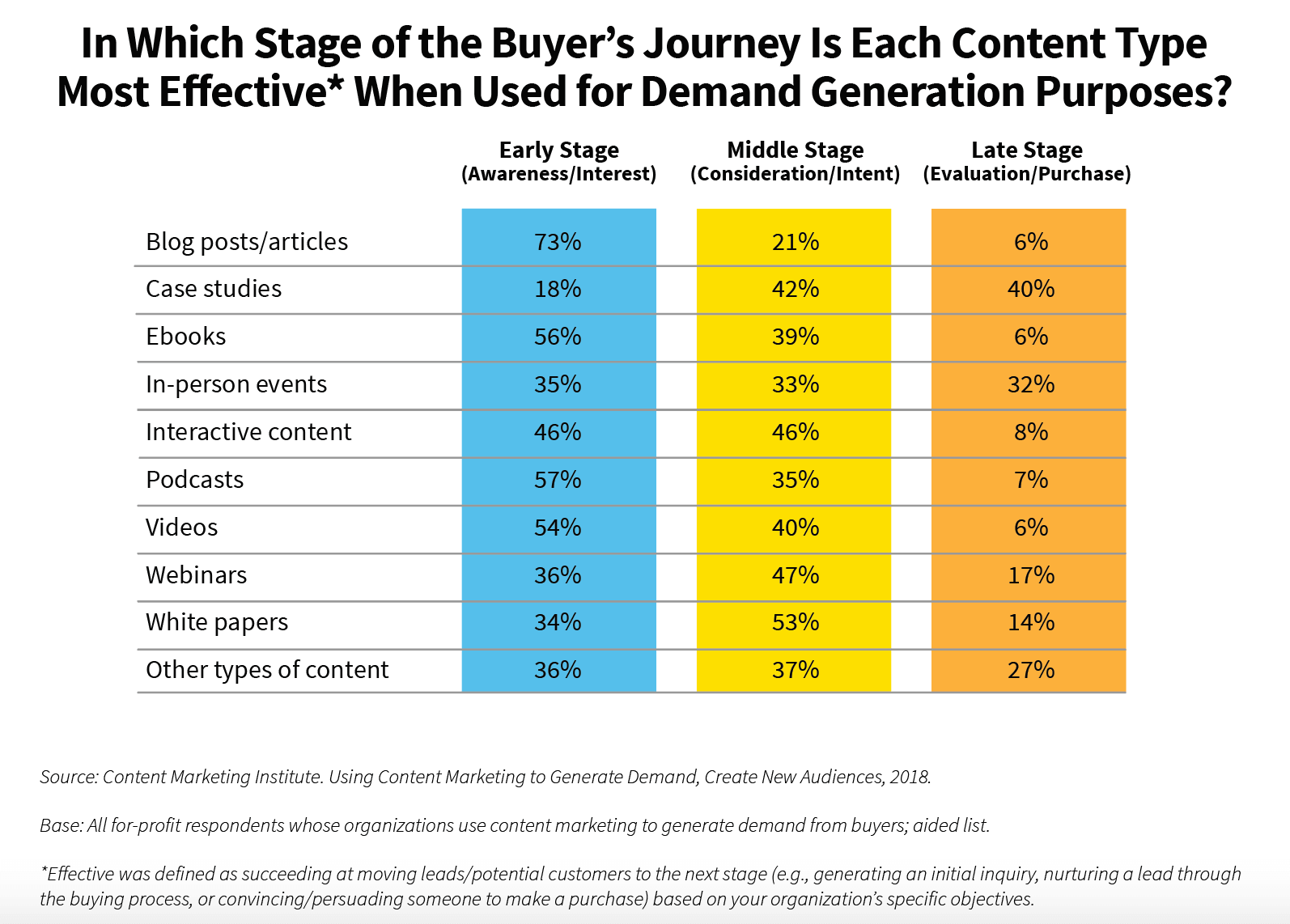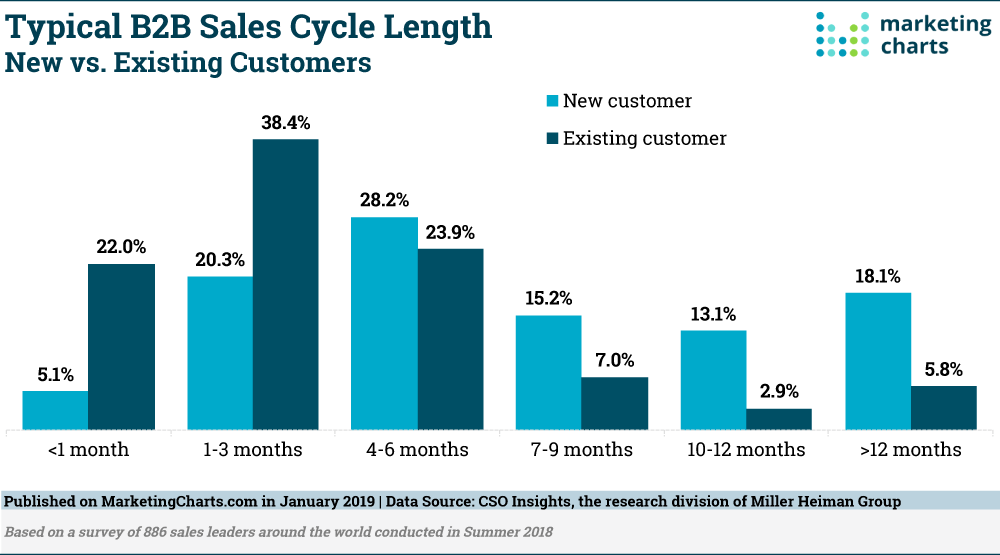8 Steps to Creating Integrated B2B Marketing Campaigns That Drive Results
8 Steps to Creating Integrated B2B Marketing Campaigns That Drive Results
With the right marketing campaign, B2B tech companies can get their message in front of the right people to drive the awareness, traffic and qualified leads they need.
The word “campaign” means different things to different people. Some refer to sending a single email as a campaign. Others sometimes call executing a webinar a campaign.
In this post, I’ll be covering the concept of an integrated marketing campaign that has interrelated tactics to help amplify a message and reach your marketing goals.
So what is the key to creating integrated B2B marketing campaigns that actually work?
Here are eight steps to ensure your B2B marketing campaigns are complete and geared towards results:
- Know your audience
- Create a message
- Nail the design
- Map content to the funnel
- Reach your audience
- Nurture your leads
- Contact your leads
- Track the overall campaign
1. Know your audience
The key to the best b2b marketing campaigns is knowing your audience. This helps drive more targeted marketing efforts and more qualified leads.
The Content Marketing Institute’s B2B Content Marketing 2019 report found that 77% of top-performing B2B content marketers use personas, compared to just 36% of the least-successful marketers.
Persona profiles can help you frame the information you will be creating in a way that’s most relevant to your target audience.
Here are a few steps you can take to get to know your prospects and customers better:
Talk to your prospects / customers: Get to know your target audience’s pain points and better understand how your solution will help them by speaking to them directly — even if it’s just a few people to start. The Buyer Persona Institute has a lot of good resources on how to get inside your customer’s head.
Talk to your sales team: The sales team is the boots on the ground in your organization when it comes to prospects. Listen to their feedback on what prospects are interested in, and what sells. The sales team will help streamline the sales enablement strategy.
Use your CRM: Mine your CRM data to find out who is involved in the purchase decision. You may be surprised at who is influencing the purchase and who you need to target along the way.
2. Create a message
A message is the idea and story that you take to the market around your product.
Say, for example, that you want to do a campaign about a particular capability of your product. Your product messaging might center on your target audience’s problems and the solutions to them.
As part of this process, you’ll want to identify your product differentiators. What are the strengths of your product or solution? How do you differ from your main competitors?
This type of information will help you create messaging that resonates with your audience. Then use this messaging to create a campaign theme or a punchy campaign slogan.
A great example is IBM’s Smarter Planet campaign. In 2010, IBM launched an integrated marketing campaign to support its “Smarter Planet” initiative, which became the basis of its growth strategy. The vision centered on how technology could make the world work better and smarter.
Its various programs consistently used messaging and slogans that included “smarter” and “smart”: “Smarter Cities”–an approach to helping cities run more efficiently and improve the quality of life for their citizens. Or, a “Smart Cape Cod”–applying technology to help manage and protect the region’s natural resources.
You may be wondering:
How does messaging translate to tangible assets in your marketing campaign?
In your campaign, you’ll create awareness, consideration and decision assets (more on mapping content to the funnel later).
-
- For an awareness piece, you might discuss the main challenges your target audience faces in a thought leadership blog article.
-
- For a consideration piece, you might host a webinar on how your solution–the one that the campaign is centered on–can benefit the target audience.
- For a decision piece, you might create a video that highlights all the features and benefits of the product capability, and why you’re a better choice than the competition.
The goal is to bring your message in various forms while upholding your theme throughout the entire campaign across all assets.
For more on this, see an article I wrote on the five things to consider when creating a killer marketing message.
3. Nail the design
Once you have a campaign theme, work with the design team to create a cohesive look and feel for the marketing campaign across your assets, from the landing pages to the banner ads.
A unified design grounds the campaign and helps your audience make a connection throughout the various touch points.
Going back to the IBM Smarter Planet example, the campaign won several awards for its branding and marketing efforts. And design was certainly a part of that.
For every campaign launched under the Smarter Planet initiative, we consistently saw a cohesive look and feel, tied in by graphics, colors and overall theme.

Of course, not every company has to do a Smarter Planet-scale campaign in order to be effective, but a little design can go a long way.
4. Map content to the funnel
You will need to identify which types of content will fill your marketing campaign and your sales and marketing funnel.
According to a report by Content Marketing Institute, you can see which types of content are traditionally used at which point in the funnel:

Generally speaking, tech marketers tend to use specific types of content the most.
The Content Marketing Institute’s Technology Content Marketing 2019 report found that the majority of tech marketers increased their use of audio/visual content (videos, live streaming and webinars) the most.
This was followed by written digital content such as articles, blogs and ebooks.

As you are documenting your strategy, keep in mind how you can use the same type of content for different places in the funnel (for example, videos that generate awareness versus those that explain product features for the decision stage).
And know that for each content asset, you will need to have a content marketing strategy for the promotion of that content, document how you will measure success and how you will nurture (more on this later).
(If your campaign will include ebooks, be sure to check out our comprehensive guide on how to create a compelling ebook your audience will love.)
5. Create programs to reach your audience
Next, you need to consider how you’ll reach your audience. Find out where they spend their time so you can create assets they will see.
For example, if you’re targeting security professionals, do they go to a particular conference like Black Hat or read a certain publication like SANS Institute? If so, you’ll want to distribute your content there.
You’ll also want to consider who is making the decisions and adjust your tactics to them.
For example, if the persona you’re targeting is a mid-level manager, then you may find that webinars are right up their alley.
But a chief information security officer, for instance, typically doesn’t have the time to sit through a webinar, so you might write thought leadership blogs or use account-based marketing to reach them.
When you are creating the programs, you’ll also want to set goals. For example, once you have the amount or percentage of pipeline contribution desired, you can then work backwards to see how many leads you need to be successful.
6. Nurture leads
To encourage conversions, it’s essential to nurture the leads you get from the campaign. For example, when someone downloads an ebook, what happens next?
An array of lead tracking solutions are available, including the popular Marketo and Oracle Eloqua.
Nurturing pays off: research from Marketo states that companies that excel at lead nurturing generate 50% more sales-ready leads at a 33% lower cost.
Make sure to establish the right frequency, too. You don’t want to overwhelm your prospects with too many emails, but you do want to stay top of mind.
As a baseline, you can try sending an email to new leads every two weeks and adjust from there.
7. Contact leads
Once your leads begin engaging with your content, your automation software can help score them based on each engagement and move them further down the funnel.
The scoring is customizable within the system you use and based on your needs. For example, a score of 100 might designate a lead as a marketing qualified lead (MQL). Now it’s time to pass that lead to sales.
You want to work closely with inside sales to ensure they’re contacting MQLs, and also giving feedback on how good the leads are. This way you can adjust as needed; if one of your marketing tactics like a webinar doesn’t produce good leads, change it.
8. Track the overall integrated marketing campaign
You want to know how your marketing campaign performed overall. This includes finding out if you’ve met your overall campaign goals and KPIs.
Your KPIs will vary but some examples include:
-
- The conversion rates of content assets and subsequent nurture emails. For example, you’d look at clickthrough rates in your email campaigns.
-
- The number of new leads the campaign has brought in that don’t already exist in your database.
-
- The number of demo meetings set up from the campaign.
- If a lead that has come from the campaign has influenced an opportunity in some way. You can track this by synching Marketo and Salesforce, for example.
While the metrics you’ll track will vary from company to company, 30% of marketers said the primary metrics they’re measured on are MQLs and sales accepted leads (SALs) (2019 Demand Generation Benchmark Survey).
At the end of the day, it’s important to remember that marketing is a marathon, not a sprint.
After all, some sales don’t close for months or even a year. In fact, CSO Insights’ 2018-2019 Sales Performance Study revealed that 74.6% of B2B sales to new customers take at least four months to close, while 46.4% take seven months or more.

As with all other aspects of marketing, the key to success is persistence. Rinse, repeat, measure and improve, learn and adapt — with strategy on your side, the outcome of your B2B marketing campaigns will soar.





